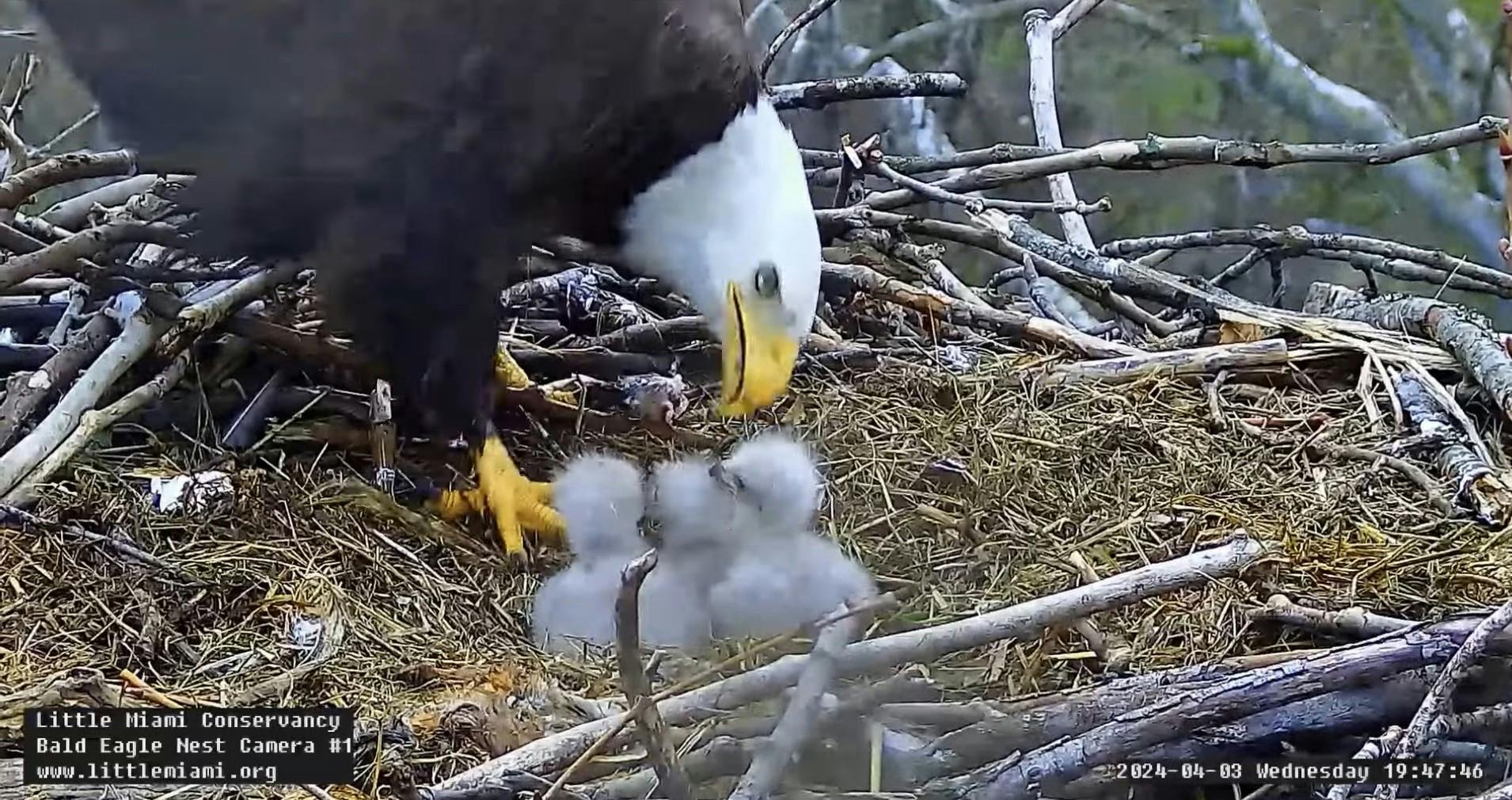We have Four Eaglets so far!
We have had a busy eagle nesting season so far. With the unfortunate situation at the Pittsburgh Hays bald eagle nest earlier this season with their egg collapsing we now have two bald eagle nests to watch with eaglets!
At the Little Miami Conservancy bald eagle nest there are three eaglets this year! The first eaglet, LM5, hatched on March 28th, the second eaglet, LM6, hatched on March 29, and the third eaglet, LM7, hatched on April 2nd. All eaglets are doing well! The LMC bald eagle camera is located in Miami, OH.
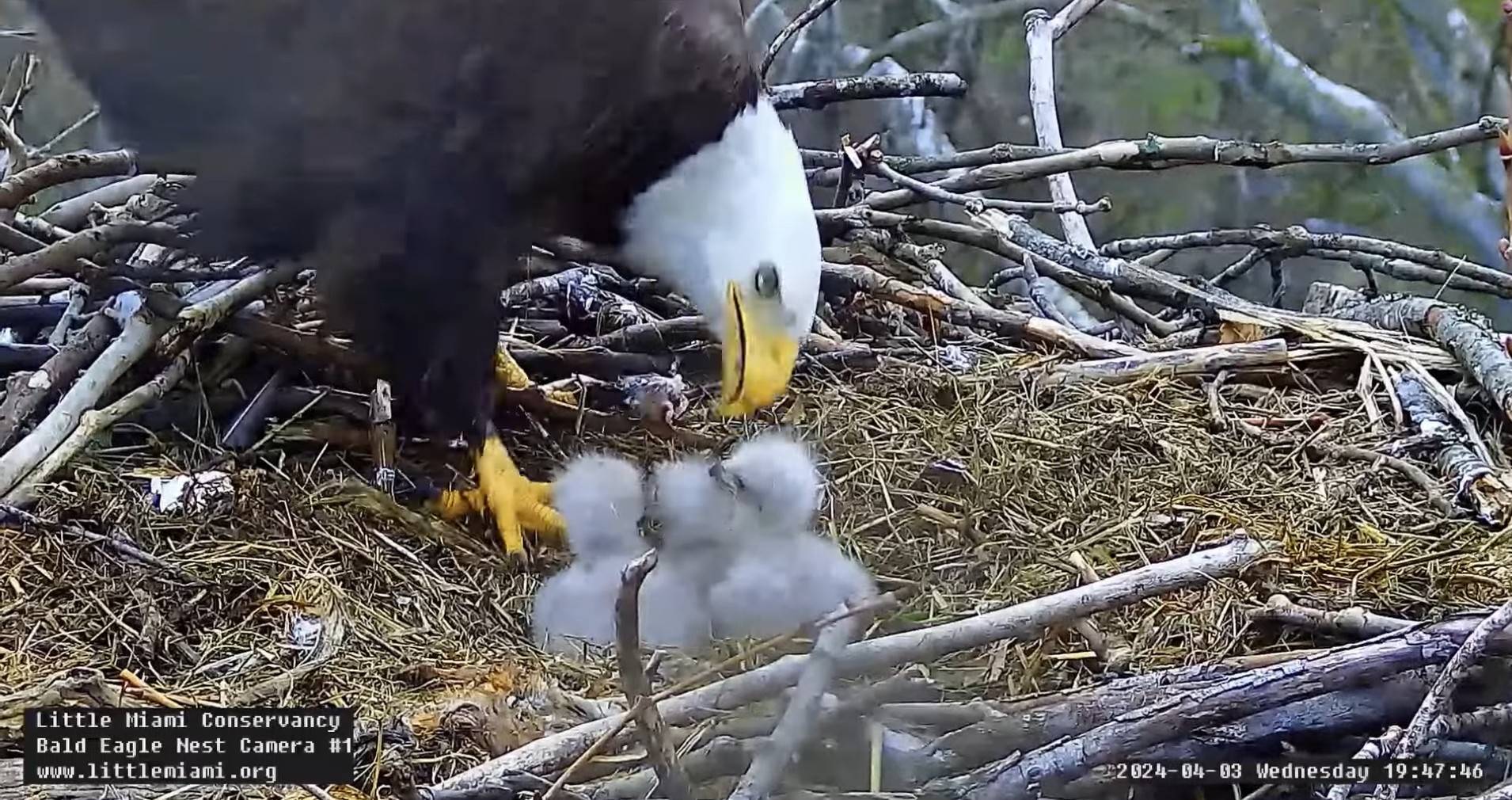 Little Miami Conservancy Bald Eagle Nest with 3 Eaglets! Little Miami Conservancy Bald Eagle Nest with 3 Eaglets! |
https://pixcams.com/lmc-bald-eagle-nest/
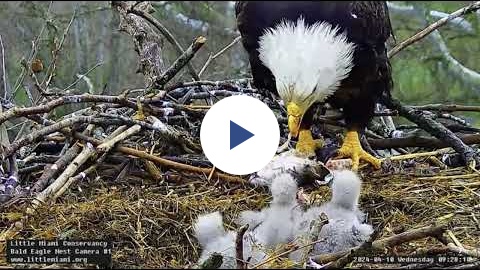
LMC eaglets getting a catfish breakfast!
At the United States Steel Corporation bald eagle nest there is one eaglet and one egg still to hatch. We do not know if the second egg is viable but we are still hopeful we will see a second eagle hatch at the USS nest. The first eaglet named USS7 hatched on April 7th.
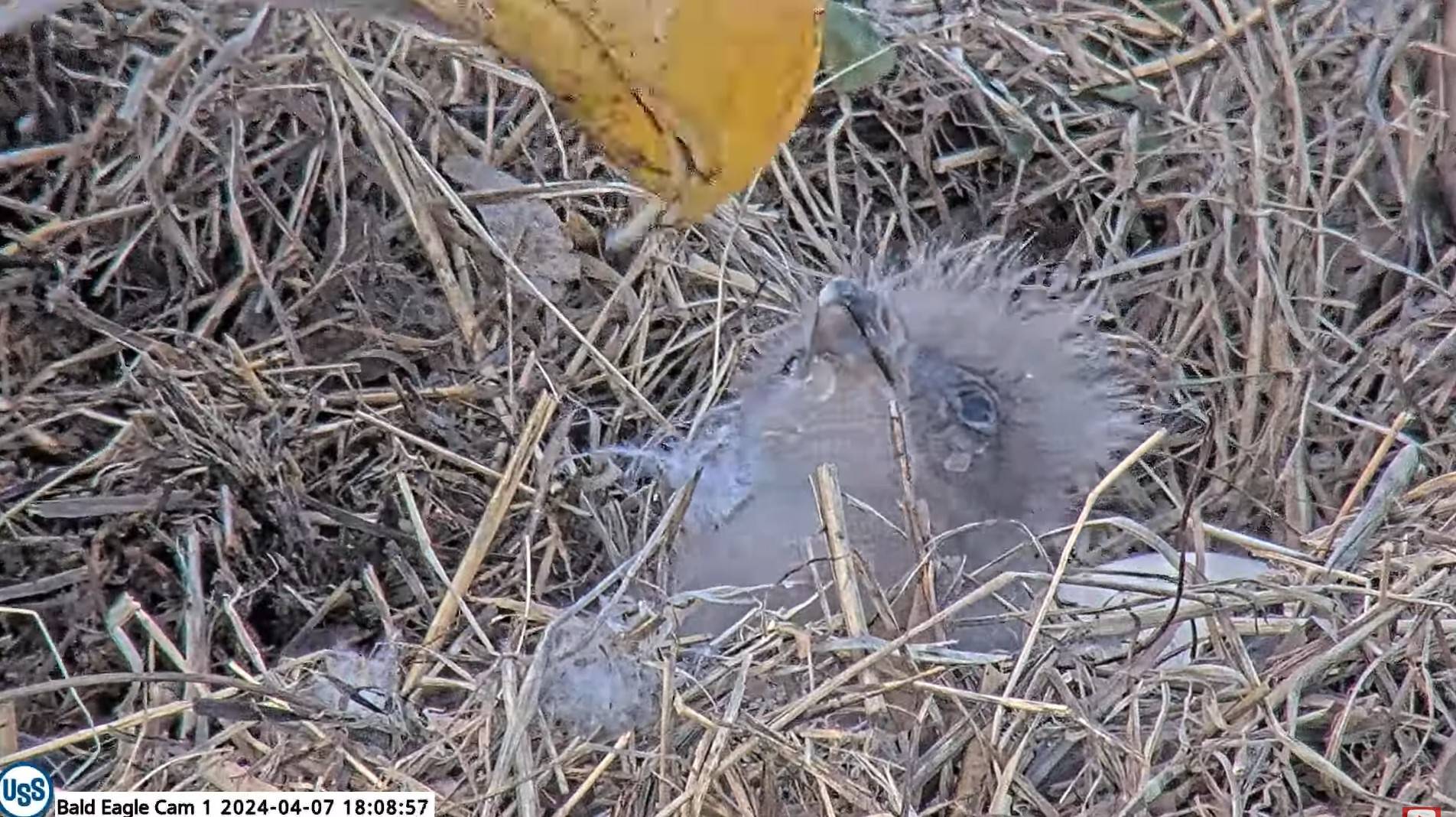 USS eaglet USS7 first feeding USS eaglet USS7 first feeding |
https://pixcams.com/uss-eagles/
The new eaglet is feeding well and growing fast! Be sure to check out the quad view if the USS nest live stream. There are four HD cameras at this nesting site showing an above the nest view and a river camera view to watch the eagles fishing in the Monongahela River near Pittsburgh, PA installed by Don German of United States Steel Corporation. Don was instrumental with the installation of AC power this year at the Hays Bald Eagle nest.
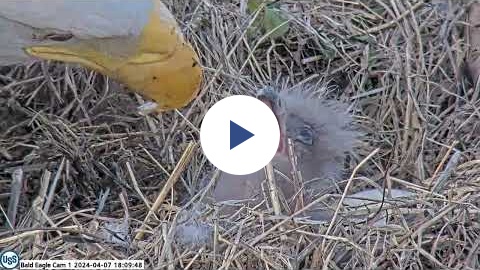
USS7’s first feeding
Our Live Streaming Nest Boxes are Active!
Spring is here and bird nesting activity has already begun in our 9 live streaming nest boxes with cameras at PixCams. By nesting in spring, songbirds can take advantage of these optimal conditions to raise their offspring when resources are plentiful and environmental stressors are minimized, increasing the chances of successful reproduction and survival for their young.
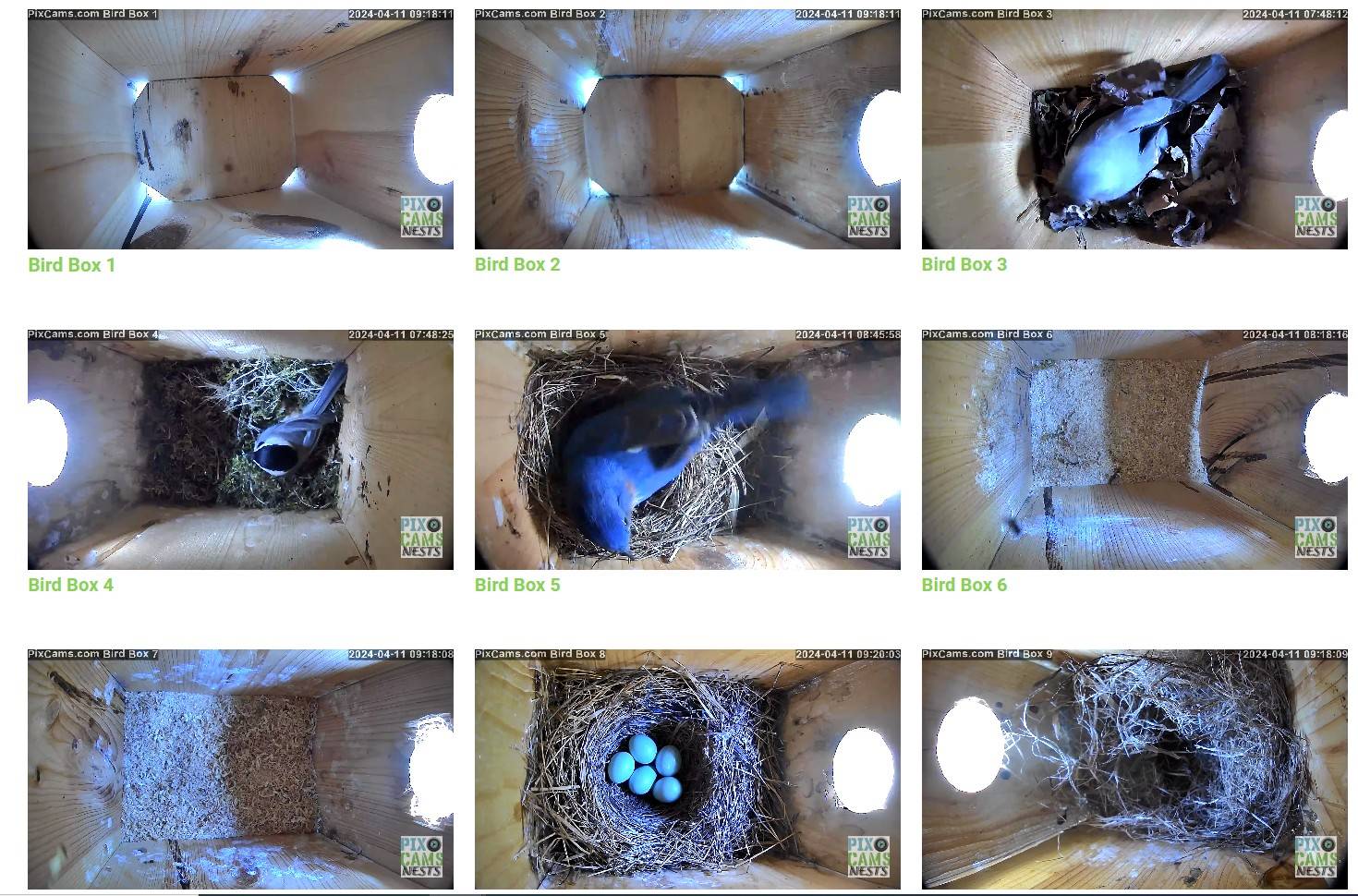 9-camera view of the PixCams live streaming bird nest boxes 9-camera view of the PixCams live streaming bird nest boxes |
https://pixcams.com/bird-nest-boxes/
Spring nesting is due to a combination of factors related to food availability, favorable weather conditions, and hormonal triggers. As temperatures rise and days lengthen in spring, an abundance of insects emerges, providing a rich and reliable food source crucial for nourishing growing chicks. The warming weather also ensures that there will be ample vegetation for nest building and cover for protection. Additionally, the longer daylight hours trigger hormonal changes in songbirds, stimulating reproductive behaviors such as courtship displays and nest-building activities.
What birds use nest boxes?
Not every bird will build a nest inside a nesting box. Only certain bird species might use a nest box that you put up in your backyard. These are know as “cavity nesting birds”. In Pennsylvania, several bird species make use of cavities for nesting, utilizing natural hollows in trees or old woodpecker excavations. The common species that use nest boxes on Pennsylvania include the Eastern Bluebird, Chickadees, Tufted Titmouse, Tree Swallows, House Sparrows, and House Wrens.
When should I put up a nest box?
In Pennsylvania, the ideal time to put up a bird nest box is typically during late winter or early spring, ideally between February and March. This timing allows birds to become familiar with the new structure before the breeding season begins. By placing the nest box before spring arrives, you provide birds with ample time to explore and select suitable nesting sites. Additionally, setting up the box before the breeding season ensures that it is available for early nesters, such as bluebirds and chickadees, who begin nesting as soon as temperatures start to rise. Monitoring the box regularly after installation can help you gauge its occupancy and address any maintenance needs, ensuring a welcoming environment for nesting birds throughout the season.
Every bird builds a unique nest!
Did you know that every common cavity nesting bird in Pennsylvania build a unique nest? In fact, if you open an unattended nest box of a nesting bird you can tell the species of bird just by looking at the nest.
The Eastern Bluebird builds the classic basket type nest that we are all familiar with. The eastern bluebird constructs its nest with meticulous care, typically using grasses, pine needles, and sometimes feathers. The female bluebird takes the lead in nest building, while the male assists by providing materials. The nest is typically located within a cavity, such as a birdhouse or natural tree cavity, though they may also use old woodpecker holes or similar sites. Inside the cavity, the female arranges the nesting material into a cup-shaped structure, creating a cozy and secure environment for incubating eggs and raising young. The use of soft, pliable materials like grasses ensures comfort and insulation for the eggs and nestlings. As the breeding season progresses, the nest may be lined with finer materials such as hair or fur, providing additional warmth and protection for the growing chicks. This careful construction reflects the bluebird’s dedication to creating a safe and nurturing space for its offspring.
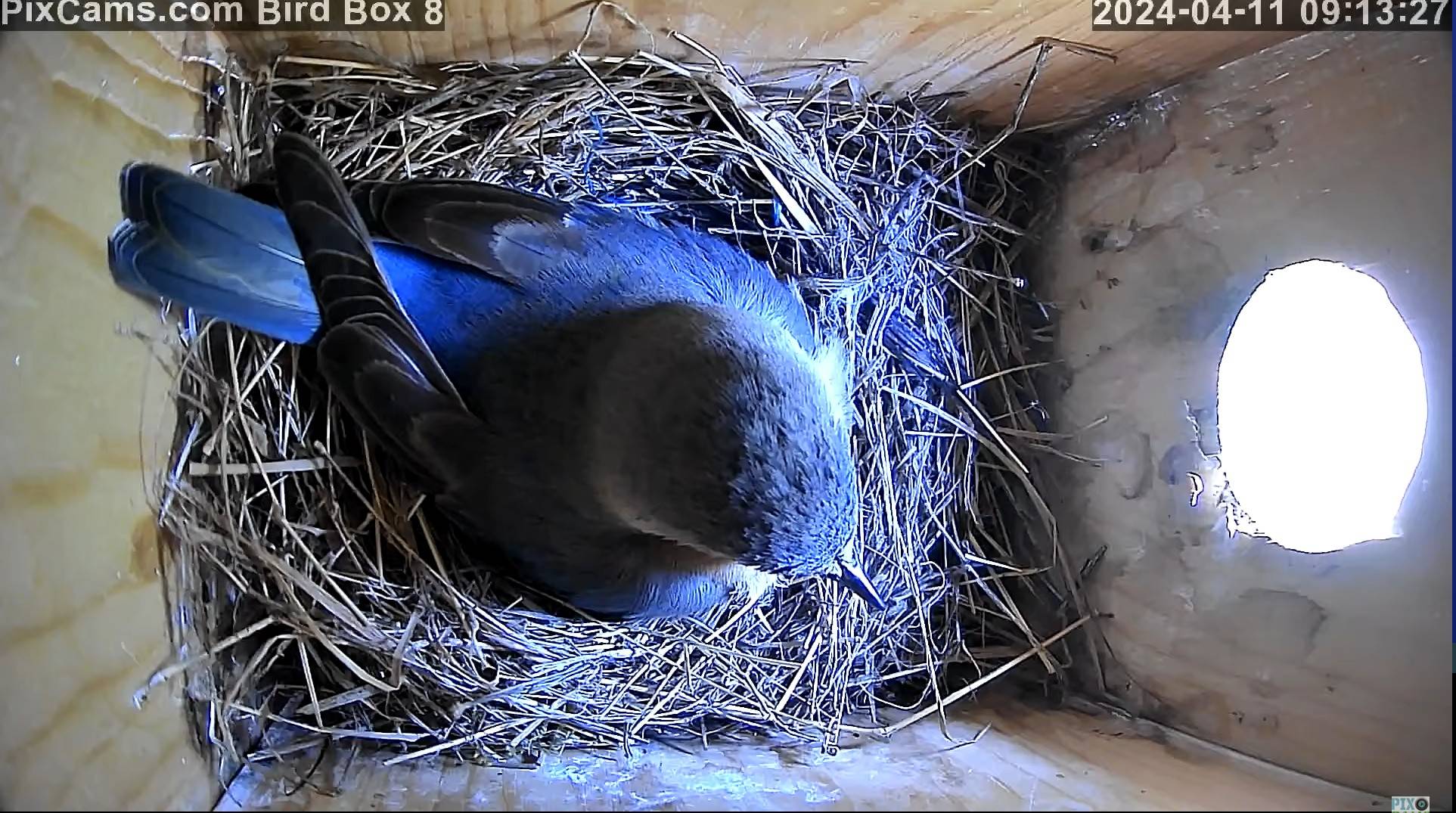 Eastern Bluebird in Nest Box Eastern Bluebird in Nest Box |
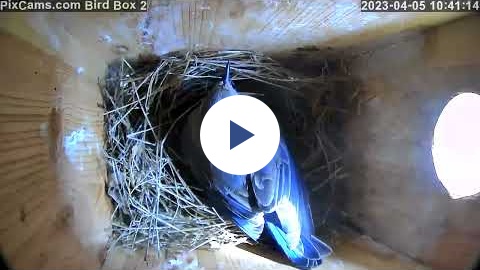
Eastern Bluebird Building a Nest
The tufted titmouse, a charismatic songbird known for its tufted crest and inquisitive nature, constructs its nest with precision and resourcefulness. Typically nesting in tree hollows, birdhouses, or other cavities, the female titmouse takes charge of nest building, while the male aids by providing materials. They primarily use a variety of dried leaves, mosses, and grasses to fashion a sturdy cup-shaped nest. The female meticulously arranges these materials, weaving them together to create a snug and well-insulated structure. Tufted titmice also incorporate soft materials like fur, hair, and feathers into the nest lining, ensuring comfort and warmth for their eggs and hatchlings. Their adeptness in utilizing available resources reflects their adaptive nature and commitment to providing a secure haven for their offspring.
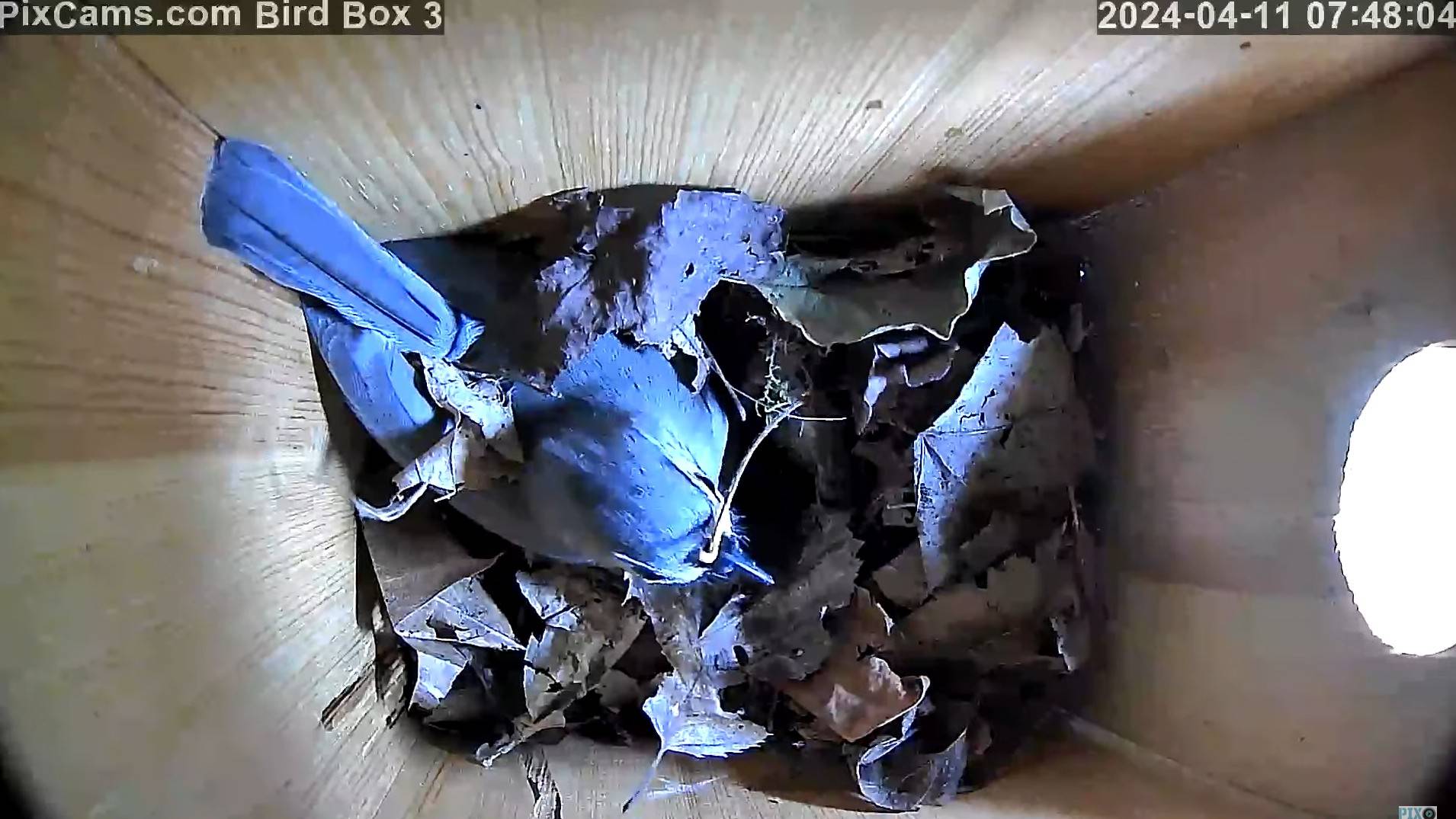 Tufted Titmouse in Nest Box Tufted Titmouse in Nest Box |
The chickadee, a small and lively bird renowned for its cheerful calls, employs a remarkable strategy in nest construction. Typically nesting in tree cavities, the chickadee creates a cozy nest using a combination of mosses, grasses, and plant fibers. With meticulous attention to detail, the female chickadee skillfully weaves these materials together to form a soft and insulating cup-shaped structure. In addition to plant matter, chickadees incorporate a variety of finer materials such as fur, feathers, and even spider silk into the nest lining, enhancing its warmth and comfort. The male chickadee contributes by providing nesting materials and occasionally assisting in construction. Their adeptness in utilizing a diverse range of resources underscores their adaptability and ingenuity in creating a secure haven for their young amidst the natural environment.
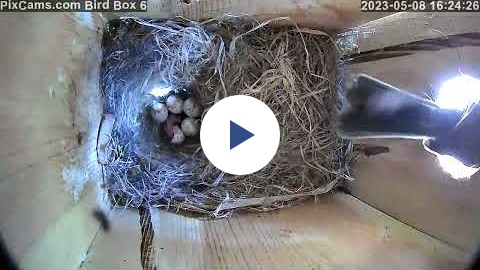
Chickadees Hatching
How to build a nest box
Building a bluebird nest box is a rewarding project that can help provide a safe habitat for these beautiful birds. To construct a bluebird nest box, start by gathering materials such as untreated lumber (cedar or pine are good choices), galvanized screws, a saw, a drill with various drill bits, a ruler, and a pencil. Follow these steps:
- Choose the Right Design: Bluebirds prefer nest boxes with specific dimensions. The box should have a floor size of about 4×4 inches and a height of 8-12 inches. The entrance hole should be 1.5 inches in diameter, placed about 6-7 inches above the floor.
- Cut the Wood: Use the saw to cut the lumber according to the dimensions of the chosen design. You’ll need pieces for the front, back, sides, roof, and floor.
- Assemble the Box: Begin by attaching the sides to the back piece using galvanized screws. Then, attach the front piece, leaving space for the entrance hole. Finally, attach the roof.
- Drill Holes: Drill drainage holes in the bottom of the box to prevent water accumulation. Also, drill small holes below the roof for ventilation.
- Create the Entrance Hole: Drill the entrance hole using a hole saw or spade bit, making sure it’s the correct size and positioned correctly.
- Install Perches: Optional perches just below the entrance hole can help fledglings when they’re ready to leave the box. Attach small dowels or sticks on either side of the entrance hole.
- Mount the Box: Mount the box on a pole or post about 4-6 feet above the ground, facing an open area with a clear flight path to the entrance hole.
- Maintenance: Clean the box annually after the nesting season to remove old nesting material and disinfect it with a mild bleach solution to prevent disease.
By following these steps and providing the right habitat, you can attract bluebirds to your yard and enjoy watching them raise their families.
For nest box sizes and specifications for different species Click Here
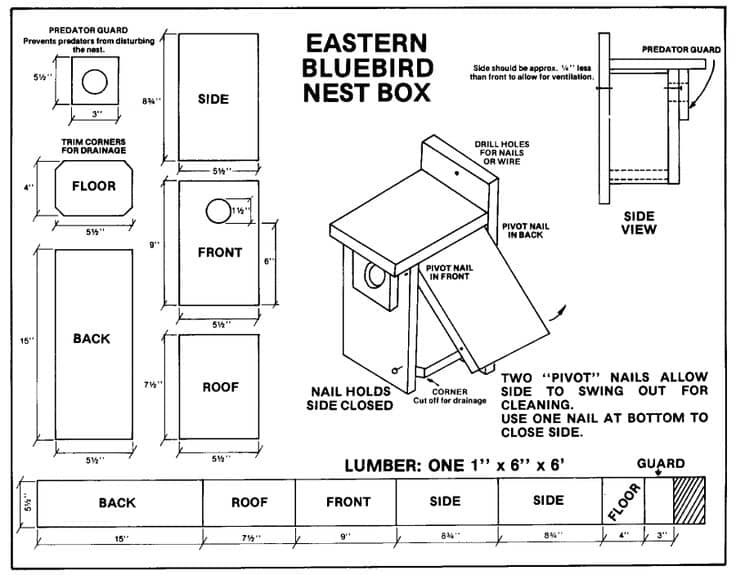 Bluebird Nest Box Plans Bluebird Nest Box Plans |
Purchasing a nest box
If you do not have the time or tools to build a nest box these are some products we recommend:
Bird Houses for Outside with Metal Predator Guard for Bluebird Wren Swallow Finch, Carbonized Wooden Nesting Boxes for Outdoor, Sturdy Bird House, Easy to Clean. Price $21.99 Click Here to Purchase
CARTMAN Cedar Blue Bird Box. Made of premium natural material with exquisite handcrafted. Price: $18.99 Click Here to Purchase
Live stream your wildlife!
If you want to live steam wildlife in your backyard we have made it easy with our new EZ Streamer-Pi! EZ Streamer-Pi is a dedicated live streaming video encoder designed by PixCams, Inc. All you need is you camera, a Raspberry Pi Single Board Computer, and our FREE EZ Streamer-Pi Software to create your own live stream! The EZ Streamer-Pi works with most Security/IP Cameras and will live stream to services like YouTube, Facebook LIVE, and Twitch. A single EZ Streamer-Pi can Live Stream 4 Cameras at Once!
https://pixcams.com/ezstreamer-pi/
Quiz You Wildlife Knowledge!
Test your wildlife knowledge, uncover fascinating facts, and delve into the wonders of the natural world. Whether you’re a seasoned enthusiast or a curious newcomer, this quiz promises to ignite your passion for wildlife and leave you with a deeper appreciation for the incredible creatures that inhabit our planet. Take one of our engaging wildlife quizzes!
https://pixcams.com/quiz/
